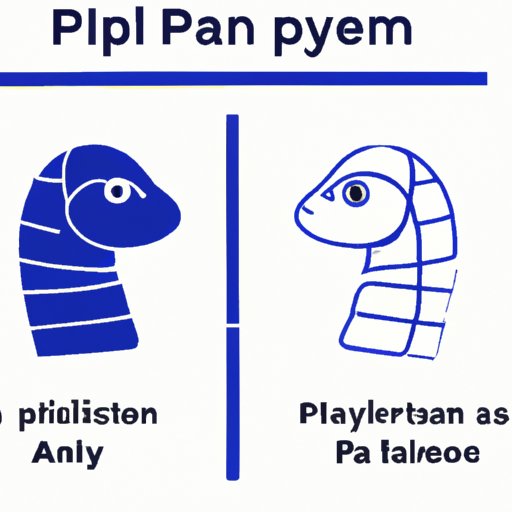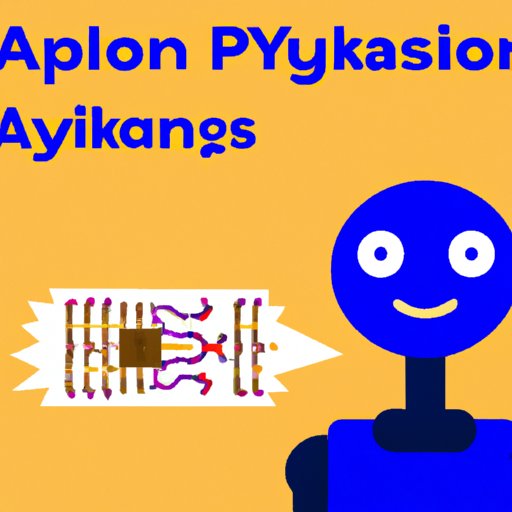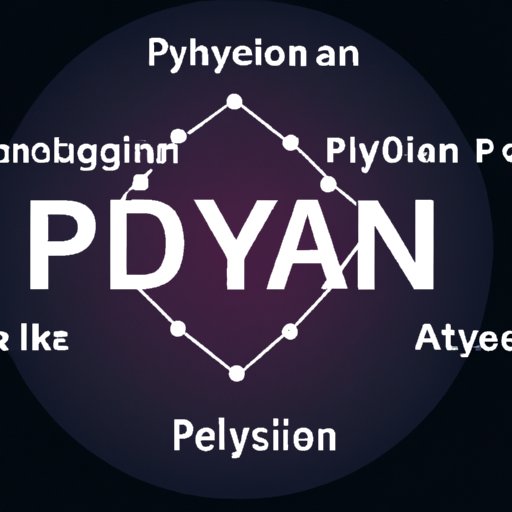Introduction
Artificial Intelligence (AI) and Machine Learning (ML) are two of the most rapidly evolving fields in technology today. As the demand for these technologies continues to grow, so does the need for a programming language that can be used to create powerful AI applications. Python has emerged as the go-to language for AI developers due to its flexibility, scalability, and ease of use.
In this article, we will explore the benefits of using Python for AI applications. We will look at the basics of machine learning with Python, compare it to other languages for AI development, and examine how Python is making AI more accessible to everyone. Finally, we will explore some real-world examples of AI projects powered by Python and discuss the future of AI with Python.
Understanding the Basics of Machine Learning with Python
Python provides a wide range of libraries and frameworks that make it easy for developers to get started with AI and ML. The most widely used libraries for machine learning include Scikit-Learn, TensorFlow, PyTorch, and Keras. These libraries provide a set of tools that can be used to build, train, and deploy machine learning models. They also provide access to a variety of datasets and algorithms that can be used to create powerful AI applications.
Scikit-Learn is one of the most popular libraries for machine learning. It is a free and open source library that provides a variety of supervised and unsupervised algorithms for data mining and analysis. It also provides tools for feature extraction, model selection, and hyperparameter optimization. TensorFlow is another popular library for machine learning. It is a powerful framework for building, training, and deploying deep neural networks. It also provides access to a variety of datasets and algorithms for creating AI applications.
PyTorch is another popular library for machine learning. It is a powerful framework for building and training deep learning models. It also provides access to a variety of datasets and algorithms for creating AI applications. Finally, Keras is a high-level library for building and training neural networks. It is a popular choice for developers due to its simple and intuitive interface.

Comparing Python to Other Languages for AI Development
Python is not the only language available for AI development. Other popular languages include Java, C++, and R. Each language has its own pros and cons when it comes to developing AI applications. Java is a popular choice due to its simplicity and portability. However, it is not as flexible or scalable as Python. C++ is another popular language for AI development. It is a powerful language with a wide range of features, but it is more difficult to learn than Python.
R is a popular language for statistical computing and data analysis. It is a powerful language with a wide range of capabilities, but it is not as flexible or scalable as Python. In terms of popularity among AI developers, Python is the clear winner. According to a survey conducted by KDnuggets, Python is the most popular language for AI development, followed by R, Java, and C++.

How Python is Making AI More Accessible to Everyone
One of the main advantages of using Python for AI development is its accessibility. Python is an open source language, which means anyone can access and use its libraries, frameworks, and toolkits. This makes it easier for developers of all skill levels to get started with AI development. Additionally, there are many automated machine learning platforms available that allow developers to quickly and easily build and deploy AI applications without having to write any code.
These platforms provide access to a variety of pre-trained models and datasets that can be used to create powerful AI applications. They also provide tools for feature engineering, model selection, and hyperparameter optimization. This makes it easier for developers of all skill levels to create AI applications with minimal effort.
Examining Real-World Examples of AI Projects Powered by Python
Python is being used in a variety of real-world AI projects. One example is autonomous driving. Many companies, such as Tesla and Google, are using Python to develop self-driving cars. Python is being used to develop the algorithms that power these cars, as well as the hardware and software that enable them to operate safely on the roads.
Another example is natural language processing (NLP). Python is being used to develop chatbots and other intelligent applications that can understand and respond to human language. It is also being used to develop applications that can analyze large datasets and extract insights from them.
Finally, Python is being used for image recognition. Companies such as Google and Facebook are using Python to develop applications that can recognize objects in images and videos. These applications are being used to improve search engines, facial recognition systems, and more.

Exploring the Future of AI with Python
The future of AI is bright, and Python is at the forefront of this revolution. New developments in AI are making it easier for developers to create powerful applications with minimal effort. For example, many companies are now offering automated machine learning platforms that allow developers to quickly and easily build and deploy AI applications without having to write any code.
At the same time, there are still many challenges facing AI developers. For example, AI algorithms still need to be improved in order to handle more complex tasks. Additionally, there is still a lot of work to be done in terms of making AI more accessible to everyone. Fortunately, Python is helping to make this possible.
Conclusion
As the demand for AI and ML grows, so does the need for a programming language that can be used to create powerful AI applications. Python has emerged as the go-to language for AI developers due to its flexibility, scalability, and ease of use. It provides a wide range of libraries and frameworks that make it easy for developers to get started with AI and ML. It also provides access to a variety of datasets and algorithms that can be used to create powerful AI applications.
Furthermore, Python is making AI more accessible to everyone. There are many automated machine learning platforms available that allow developers to quickly and easily build and deploy AI applications without having to write any code. Finally, Python is being used in a variety of real-world AI projects, ranging from autonomous driving to natural language processing and image recognition.
In conclusion, Python is an excellent choice for AI development due to its flexibility, scalability, and ease of use. It is becoming increasingly popular among AI developers due to its ability to make AI more accessible to everyone. With new developments in AI and Python, the future of AI looks brighter than ever.
(Note: Is this article not meeting your expectations? Do you have knowledge or insights to share? Unlock new opportunities and expand your reach by joining our authors team. Click Registration to join us and share your expertise with our readers.)
